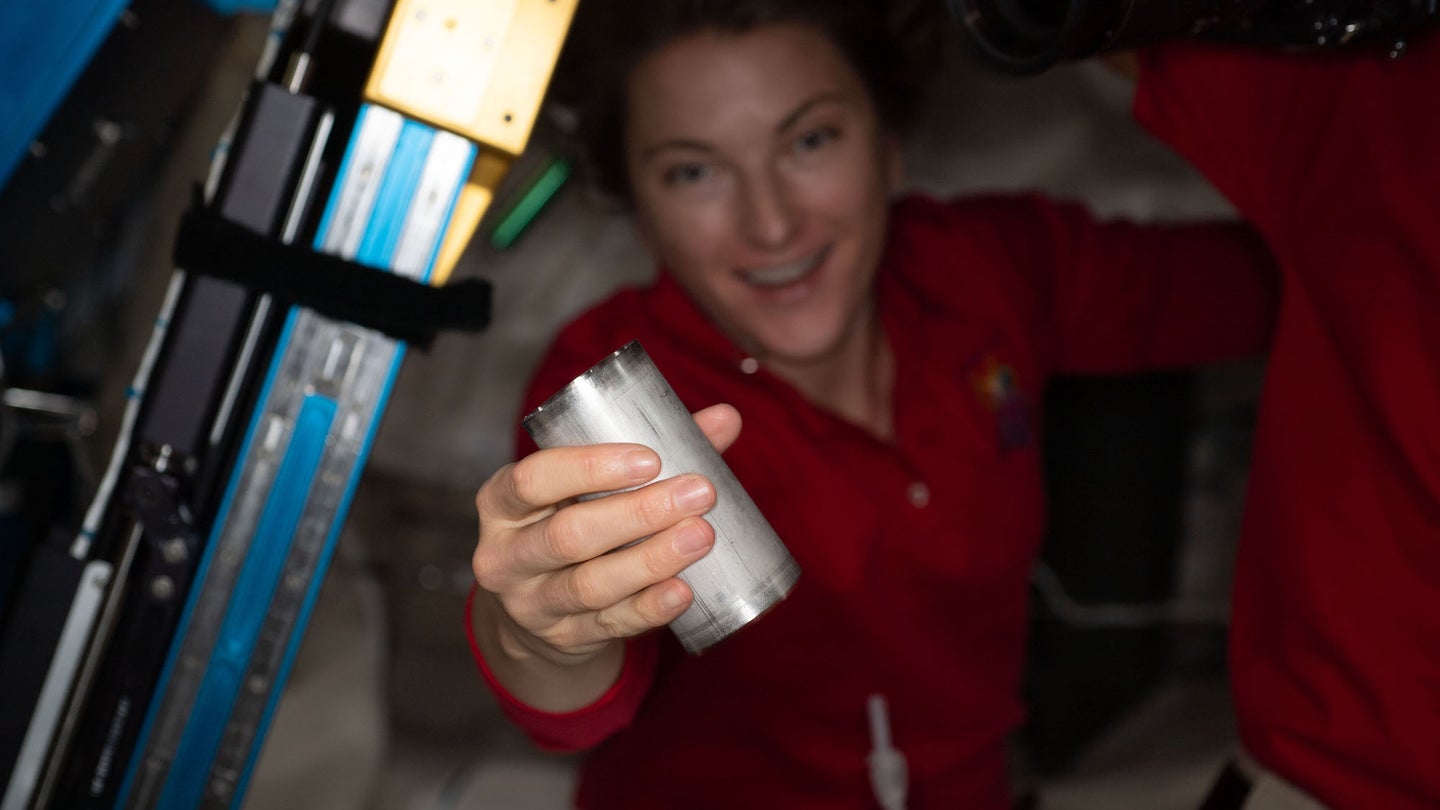
Astronauts aboard the International Space Station just achieved a milestone in water recycling that could prove crucial to expanding human presence in the solar system—if you can stomach it.
According to an announcement from NASA last week, the space station’s Environmental Control and Life Support System (ECLSS) has accomplished the “significant goal” of recovering nearly 98 percent of all water brought aboard by the crew through the successful harvesting and filtration of astronauts’ breath, sweat… and yes, pee.
There’s really no way to overstate how crucial water supplies will be for human space travel beyond the Earth’s orbit. Extended, or even permanent, stays on the moon and Mars will require constant access to potable water—a requirement neither environment is particularly known for. Because of this, researchers and astronauts need to get not only creative, but flexible, when it comes to water sources.
[Related: The ISS’s latest delivery includes space plants and atmospheric lightning monitors.]
Case in point: The ECLSS Water Recovery System aboard the ISS combined multiple components to pull off the “pretty awesome achievement,” said Christopher Brown, a team member at Johnson Space Center managing ISS life support systems.
First, the Water Processor Assembly (WPA) handles wastewater to produce drinkable liquid, while state-of-the-art dehumidifiers capture cabin air moisture generated by the crew’s exhalations and perspiration. Meanwhile, a Urine Processor Assembly (UPA) relies on a method known as vacuum distillation to recover astronaut pee. As NASA details, the distillation produces two liquids—water, and a urine brine that technically still includes some reclaimable hydration.
Previously, there wasn’t much that could be done with the brine, but breakthroughs for a new Brine Processor Assembly (BPA) can now extract that remaining, usable water in a microgravity environment. To pull it off, the BPA runs the brine through a “special membrane technology” before subjecting it to warm, dry air to evaporate the water. That resulting humid air, alongside astronauts’ breath and sweat, is then collected by the previously mentioned ECLSS systems to be purified and stored for future usage via special filters and a “catalytic reactor” that destroys any trace contaminants. Iodine is then added to prevent any future microbes from growing within the new, clean water reserves.
[Related: Before the Artemis II crew can go to the moon, they need to master flying high above Earth.]
The new recovery percentage is a huge step forward according to Jill Williamson, the ECLSS water subsystems manager. Prior to implementing the BPA, the system could only retrieve between 93-to-94 percent of overall onboard water, compared to the milestone 98 percent benchmark.
Williamson goes on to explain that the processing is “fundamentally similar” to some water distribution systems here on Earth, only within a microgravity environment. As gross as it may sound to some, the water that is reclaimed, filtered, and cleaned from astronauts’ urine aboard the ISS is actually better than most available municipal water.
“The crew is not drinking urine; they are drinking water that has been reclaimed, filtered, and cleaned such that it is cleaner than what we drink here on Earth,” Williamson says.
Cheers, ISS.
The post Onboard the ISS, nothing goes to waste—including sweat and pee appeared first on Popular Science.
Articles may contain affiliate links which enable us to share in the revenue of any purchases made.
from | Popular Science https://ift.tt/pla52O6




0 Comments